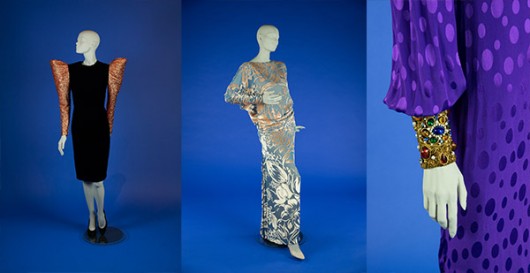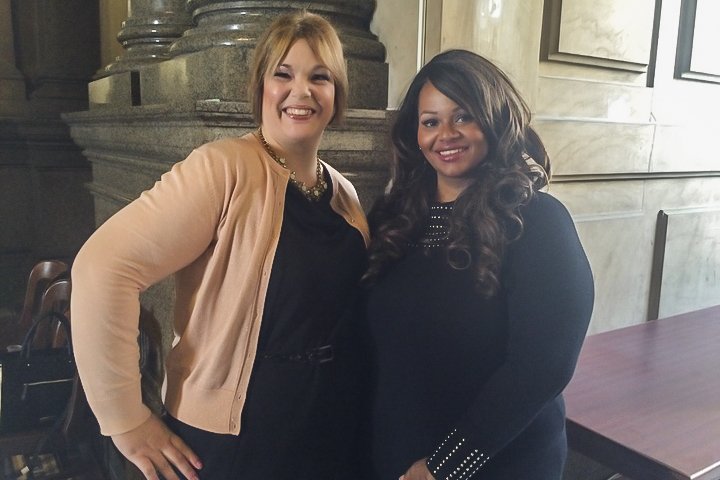When Marc Jacobs staged his final show as head designer at Louis Vuitton on
Oct. 2, 2013, he was given a standing ovation. He was hailed in the fashion
press as the most important and influential American designer of his
generation.
So Jacobs announced it was time that he — like Michael Kors and Prada before
him — should go public. He was poised to become fashion’s next self-made
billionaire, a rarity in a world of luxury fashion conglomerates.
Yet as with much in Marc Jacobs’ life, not all was as it seemed: He’d told
the press it was his choice to leave Louis Vuitton, yet there were rumblings
that he’d been fired. “His contract may not be renewed,” a source told Reuters
weeks before.
Meanwhile, two years on, his company has yet to go public.
All is not well in the house of Marc Jacobs.
A profile of Jacobs in last February’s W magazinenoted that the designer wore
the same clothes — Adidas training pants and shoes — three days in a row. Last
March, it was announced that his diffusion line, Marc by Marc Jacobs — which
reportedly made up 70 percent of the company’s business — would close, as would
its stand-alone stores.
In April, Adidas filed suit against Jacobs, claiming he’d “intentionally and
maliciously” ripped off its iconic three-stripe design. In its filing, the
company noted that “this is particularly damaging to people who perceive a
defect or lack of quality in Marc Jacobs’ products.”
Jacobs has also fallen out with photographer Juergen Teller, who had shot
every Marc Jacobs ad since the very first one, in 1998, which starred Kim
Gordon. Teller quit in 2013 over Jacobs’ insistence that Miley Cyrus star in the
spring/summer campaign.
“It was our first time disagreeing,” Jacobs told W. “I guess a lot of people
had problems with her behavior or something — because they’re all so pure and
chaste, right? One thing I don’t tolerate is hypocrisy. Anyway, my attitude was:
You don’t want to do it? Fine. Sorry it’s not working for you; but it’s my
choice.”
In June, his Marc Jacobs Collection store at the Palais Royale in Paris
closed. That same month, he accidentally posted a nude selfie to his 191,000
Instagram followers. “It’s yours to try!” read the caption.
This is Marc Jacobs, at 52 years old.
Future of design
Marc Jacobs’ career began in 1984, when he presented his thesis collection at
Parsons School of Design. It was youthful and exuberant, one that ran counter to
the decade’s brittle, overdone, “Dynasty”-infused glamour.
At the presentation was a fashion executive named Robert Duffy. He thought
Jacobs could be the future of American fashion, and two days later hired him at
the now-defunct label Sketchbook.
“It was what I dreamt of,” Duffy told The Wall Street Journal in 2012. “If I
could find a designer who I could really relate to, this would be a tremendous
adventure. I was 28 at the time and Marc was 21.”
Later, in commemoration, Duffy had “1984” tattooed on the inside of his left
wrist. “It was Robert’s belief in me then — that’s why I’m still here,” Jacobs
told Women’s Wear Daily last March. “From those very early days . . . we said,
‘Whatever happens, you and I are partners.’”
In 1985, Jacobs’ debut spring collection won raves from WWD and The New York
Times — but even then, he was a heavy drug user. Jacobs was fired within the
year.
“Everyone I knew at that time who was 20 to 25 was taking drugs,” Duffy later
said. “But at a certain point I stopped, and other people stopped, and Marc
wasn’t stopping . . . I just kept thinking, ‘There are a lot of high-functioning
drug addicts.’”
It was Duffy who kept Jacobs’ issues quiet, kept him working and, in 1988,
helped pull off another coup: Jacobs was tapped as head designer at Perry Ellis,
garnering national headlines in the process.
Jacobs’ breakout came in 1992, when he showed his now-infamous “grunge”
collection. It was a high-end take on flannel shirts and Converse, meant to
reflect the spirit of Nirvana and the kids who thrifted at the Goodwill. Walking
in that show was his new favorite model, the waifish Kate Moss, who represented
this modern kind of beauty.
That collection was a critical and commercial flop, and Jacobs was fired.
Duffy, once again, cleaned up the mess, working hard to secure an exit
package that would help Jacobs fund his own line. “Marc’s way of dealing with
these problems was to get high,” Duffy later said. “He wasn’t sitting in the
negotiations with the Perry Ellis lawyers. He never even met the Perry Ellis
lawyers.”
Duffy had become to Jacobs what Pierre Bergé had been to Yves Saint Laurent:
the visionary of commerce, the manager of money, a ballast, a confidant.
Both men have found the comparison apt. “We’ve never been lovers, like Bergé
and Saint Laurent,” Jacobs told the Wall Street Journal in 2012. “Although
people always thought we were . . . I don’t think without him or without me we
could achieve all that we’ve achieved.”
Marc Jacobs International was founded in 1993. Jacobs focused on showing
cleaned-up, commercial collections, and in 1997, when LVMH CEO Bernard Arnault
was looking for a head designer at Louis Vuitton, he found Jacobs.

Pressure’s on
Jacobs’ appointment was historic, the stress unbearable. Executives were
constantly changing their minds about what they wanted in a luxury womenswear
line, a first for the 143-year-old house.
“Depending on what day of the week it is,” Jacobs said at the time, “the
stuff I make has to preserve the tradition of Vuitton or it has to rock the
world.”
His first collection was a flop, but his own line — which by 1998 included
the younger, cooler, cheaper Marc by Marc — was thriving.
He’d become the designer of choice for offbeat beauties like Sofia Coppola
and Chloë Sevigny. His girls mainlined the ’70s nostalgia of their childhoods,
which Marc by Marc re-interpreted season after season and sold right back to
them. He toggled the fringe and the mainstream, the high and the low, and in
1998, there was no cooler American fashion label than Marc Jacobs.
By 1999, Marc had a full-blown heroin addiction. Duffy was the only one to
help.
“Robert probably cares about me more than anyone else in my life — about my
well-being as well as my ability to perform as a designer,” Jacobs told the
Journal in 2012. “As soon as he realized [my heroin addiction] he said, ‘I’m not
going to sit back and let you kill yourself.’ He went to Mr. Arnault and said,
‘Marc needs to get help.’”
Jacobs was resistant to rehab, and Duffy made it clear that his bosses would
let him carry on until he OD’d. “These people don’t really love you or care
about you,” Duffy told Jacobs. “They want you to work, and if you die, that’s
it.”
Jacobs went to rehab. Once clean, he had a renewed sense of purpose, and
Duffy set about building an empire. In 2001, they opened three Marc Jacobs
stores on Bleecker Street — such was the demand for his stuff. The cachet of
his brand turned that once-grim West Village block into a mini Gold Coast.
At Vuitton, he collaborated with his hero, artist Stephen Sprouse, on a
graffiti-inspired LV-monogrammed bag. It was such an astounding hit that Vuitton
— a house that previously specialized in bags — established its first-ever
waiting list.
In December of that year, actress Winona Ryder was caught shoplifting, among
other items, a $760 Marc Jacobs cashmere sweater. She wore his clothes to
court.
“Throughout her trial,” said the Washington Post’s Robin Givhan, “Ryder
looked splendid.”
It was the apotheosis of Marc’s fame; the cultural moment was his. Yet in
2007, Jacobs was abusing drugs again, getting thrown off planes, disappearing
for days at a time.
It was Duffy who called him out: “Marc,” he said. “I know what’s going on.”
As he did in 2001, Duffy encouraged Marc to be open about his issues. “Marc is a
gay man who is a drug addict, who hires hookers,” Duffy said in 2008. “Why lie
about it?”
As recently as 2012, right before Jacobs’ contract was up at Vuitton, Duffy
told the Journal he’d never leave, despite all Jacobs had put him through.
“We’ll always need each other,” Duffy said.
‘A bad sign’
Last March, Duffy quietly stepped down.
“That’s always a bad sign,” says veteran retail and trend forecaster David
Wolfe. “You can never tell what causes a split like that — it’s like trying to
look at the inside of a marriage. It’s going to have a bigger impact than one
might think.”
Jacobs and his company declined to comment for this article.
As Duffy exited, LVMH appointed former Givenchy exec Sebastian Suhl as CEO.
That same month, Marc by Marc Jacobs — just relaunched to great fanfare in 2013
— shut down. Plans for a Madison Avenue flagship, originally slated to open by
the end of 2014, have stalled.
Suhl told WWD that moving the brand into malls was “a glaring opportunity” —
an enormous repositioning of a label that once thrived on exclusivity.
Fortune magazine reported that compared to luxury brands like Chanel and
Victoria Beckham, Marc Jacobs clothes and accessories have little resale value.
The man who once monthly churned out $1,000 It Bags no longer generates
excitement or desire.
“Young people no longer covet Marc Jacobs as a label,” Wolfe says. “That’s
really what’s wrong, and it cannot be repaired.”
“I don’t know what’s going on, I really don’t,” Jacobs told the Financial
Times in July. “I’ve never been a business person, nor have I ever pretended to
understand the first thing about it.”
His hand was bandaged, the reporter wrote, as “the result of an infection
brought on by his compulsive nail-biting.”
The high-end Marc Jacobs line has also suffered from a cohesive vision for
the clothes — from collection to collection, there is no identifying
fingerprint, the kind that marks a Ralph Lauren, a Diane von Furstenberg, a
Michael Kors.
Jacobs’ last collection, shown during September Fashion Week, “was so far
from anything one would expect from Marc, or buy from Marc,” Wolfe says. “It
toggled between dowager Halloween and cutesy talent show. If you’re only as good
as your last collection . . . the future looks kind of bleak to me.”
It’s a feeling many Marc Jacobs employees expressed to WWD’s Bridget Foley,
who covered Duffy’s June wedding.
“The company’s business is undergoing a great deal of change. Many don’t know
what their futures hold,” she wrote. “Many don’t know what their futures
hold…[But] several offered variations on a singular thought: ‘We were so lucky
to have been a part of something special.’”









